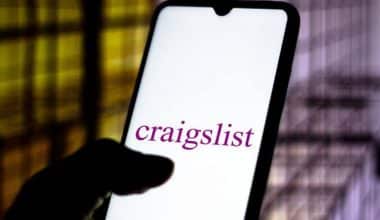E-commerce shops utilize flash sales to increase revenue, raise brand awareness, capitalize on consumers’ “fear of missing out,” and entice customers to make impulse purchases.
Does that seem manipulative? Consumers appreciate the advantage of receiving a product they want at an unbeatable price. Many internet merchants employ this promotional price method to boost sales with great success.
This essay will teach you everything you need to know about creating an effective flash sale, as well as provide examples from real e-commerce firms.
What is a Flash Sale?
A flash sale is a discount or promotion offered by an e-commerce store for a limited time. Because the quantity is restricted, the discounts are frequently higher or more substantial than standard promotions. The time limit and limited availability entice buyers to buy on the spot – aka impulse buying.
While any e-commerce firm can use flash sales as a helpful promotional marketing tool, other businesses rely entirely on them. Zulily, for example, is a flash sales website aimed at busy moms that offer things such as baby clothes and baby accessories at drastically reduced costs for a limited time.
What are the Benefits of Holding Flash Sales?
Flash sales provide an amazing opportunity to sell a huge volume of products in a short period of time. Thousands of customers may check out in a matter of minutes in some circumstances. When considering a flash sale, you’ll need to determine if it’s good for your business.
A successful flash sale will result in:
- Extra room for inventory: Flash sales let you get rid of excess inventory, such as out-of-season products or dead stock. They contribute to lower inventory and operating costs. Furthermore, if things in a warehouse have been collecting dust, you can move them out to make a place for new, in-demand products.
- FOMO that drives sales: Customers dislike feeling as though they are missing out on anything. You can entice potential buyers who have been waiting for the ideal price point by holding a flash sale.
- Boost customer loyalty: A fantastic flash sale discount is an excellent way to reward regular consumers. The more clients love you, the more probable they buy from you in the future.
Cons
- Margin reduction is a drawback: A flash sale discount can range from 50% to 70% off regular retail prices. If your margins are thin, you may not make much profit per item.
- Attract terrible consumers: One-time buyers are frequently drawn to flash sales. They take advantage of the offer and then never buy from you again.
- Your reputation will suffer as a result: Some businesses manage flash sales ineffectively, endangering their reputation. The increase in web activity can cause your website to slow down, resulting in a poor user experience. Maybe they fail to give outstanding customer service after the sale.
How To Run a Flash Sale
Now that you’ve seen some successful examples of flash sales, let’s have a look at how you can run one for your brand:
- Determine the purpose of your sale.
- Choose the appropriate products.
- Keep the time span brief
- Advertise your sale as soon as possible.
- Check Inventory
- Be ready to ship
#1. Determine the purpose of your sale.
Before you begin promoting your sale, determine what you want the sale to accomplish. Are you wanting to get rid of surplus inventory or raise product awareness during the Christmas season? Or perhaps both?
Be explicit about your objectives. You might aim to:
- Make a place for new, popular products.
- Boost customer loyalty
- Generate FOMO for a product launch.
- Take advantage of a popular shopping holiday such as BFCM.
- Bring in new clients
For example, if one of your key aims is to get rid of an out-of-season line, how would your flash sale accomplish that? Will you include a widget on your website so that people can learn about it right away? Will you use a code at checkout? Are you going to run retargeting advertisements for customers who leave your site?
#2. Choose the appropriate products
You may decide to host a flash discount on your headline product and be done with it in two to three hours, without giving it any thought. This could work well and be the only choice for an online business with a small number of SKUs.
So, if you’re a merchant with thousands of items—many of which aren’t selling as fast as you’d like—how do you choose the ones that would work best in a flash deal?
- To determine search volumes, use Google’s Keyword Planner.
- Uncover mediocre or unfavorable product reviews made by competitors’ consumers and steal them with a smart sale offer.
- Use keyword tools such as SEMRush and Clearscope to determine the products your competitors are focusing on and undercut them.
If the purpose of your flash sale is to attract new customers:
- To move extra high-margin seasonal goods rapidly and reduce accounting costs, flash sell them.
- Establish a relationship or capture a competitor’s consumer by flash-selling trendy, low-margin items.
- Conduct a “hidden” and ongoing sale for new clients, which you will promote in your confirmation email.
If your flash sale is directed at existing customers:
- Choose items based on high traffic or low purchase volumes.
- Flash sell just to segments that have already demonstrated an interest in them (visited product page, clicked on an ad, etc.).
- Conduct a “secret” and ongoing sale for existing clients, marketed through abandoned-cart emails.
#3. Keep the time span brief
People have learned that for a good offer, they will forego sleep, line up before sunrise, and behave in ways they would not otherwise. Yet, this does not imply that you must “open the doors” at 4 a.m.
When should you hold a flash sale?
There are no “best practice” timelines for organizing a flash sale, just as there are no “best practice” timetables for advertising. The timeline will be determined by your product and target market.
That is, examine your analytics to see if any purchasing patterns emerge:
- What day(s) of the week do individuals historically purchase?
- When have individuals traditionally purchased?
- When do your email open rates peak?
- What should the duration of a flash sale be?
The shorter the sale, the better. A short sale generates a sense of urgency and encourages individuals to act quickly. Research reveals that 50% of flash sale offers to occur within the first hours. Most flash sales last between two and 36 hours.
#4. Get the word out about your sale as soon as possible.
A well-planned launch can boost the success of your flash sale. The earlier you publicize it, the more people will be interested and on the lookout for your event. Eighty-five percent of buyers conduct research before making an online purchase, so it’s a good idea to notify them before you go live.
Advertising your sale early also helps it get popularity. You can build an SMS and email list, then send out countdown messages before the sale. Alternatively, you might create a series of social media postings to increase your reach and sales visibility.
#5. Examine the inventory
Forty-five percent of flash sale items sell out faster than expected. Consider how happy a customer would be after viewing your marketing, only to discover that the item they want is out of stock. They’d probably be let down. You don’t want to run out of flash sale items too soon.
Maintain stock levels on the day of the sale by working with a third-party logistics (3PL) provider that provides inventory control capabilities. ShipBob and other logistics businesses provide real-time visibility into your inventory levels. It assists you in tracking available stock in its fulfillment facilities and notifies you when inventory is low or you need to reorder. It’s a simple approach to ensure the success of your flash sale.
Read Also: 3PL LOGISTICS: Meaning, Examples & Companies
#6. Be ready for shipping
No customer wants to have to wait a month for their merchandise. Increasingly online buyers are picking same-day delivery at checkout, with 68% of consumers stating speedy shipping would drive them to conduct an online order, according to a February 2021 survey by Digital Commerce 360.
Plan your shipping and fulfillment strategy for a flash sale. Inform your fulfillment partners about the sale so that they can prepare for a huge influx of orders during that time period. A dependable 3PL can ensure that your consumers receive their things quickly and have a positive experience from start to finish, converting them into loyal customers in the future.
Why Flash Sales Fail (and How to Avoid it)
Now that you know how to organize a flash sale, let’s look at why some fail and how to avoid it.
#1. Shipping disaster
It’s very uncommon for flash deal clients to grumble about having to wait several weeks for a product that arrives in installments.
Consumer perception is affected not only before and during the sale but also by what happens after a transaction is made. It is critical to shipping flash sale items as soon as possible. About 40% of consumers want their items to arrive in two days, and 18% will pay more for next-day shipping.
Provide free shipping to make your flash sale stand out. Not only will this help you identify your business and compete with Amazon, but free shipping will also improve your average order value (AOV). According to research, 72% of consumers regard free shipping as the primary reason they shop online.
#2. Inventory failure
45 percent of things sell out sooner than anticipated. One method to really disappoint clients is to generate excitement, utilize scarcity to drive them on-site, and then inform them the item they want is out of stock.
Four steps can be taken to reduce inventory failure and the accompanying fallout:
- Analyzing demand and adjusting your supply chain accordingly.
- Making your inventory more visible by including inventory quantities on your product pages.
- Being ready to say “I’m sorry” and staying in frequent contact with buyers if you make a mistake.
- Embracing scarcity as exclusivity and enabling late-arriving guests to be notified of your next sale via email or Facebook Messenger.
#3. Bots fail
The issue is twofold: first, bots deprive committed customers of the opportunity to acquire products they truly desire. Second, bots have spawned a booming online re-sale market, harming both shops and fans.
You only need to look at re-sale websites. Because, while those hard-to-get things that were just on flash sale on your site are sold out, those identical products are available online at enormous markups via resellers within minutes.
When your genuine customers miss out on a flash sale from their favorite brand, they are understandably irritated, and many of them will vent on social media. They’ll point the finger at you, not the bots or the resellers, and they might even accuse you of conspiring with the reseller sites.
Your most ardent clients are anticipating your flash sale, but your brand is disappointing them. What can you do to mitigate the bots? Your most important distinction as a flash seller will be to level the playing field. If you can slow down the bots long enough (or prevent them entirely) so that the true superfan of your brand can get their hands on your stuff, your brand can avoid the negative publicity that comes with flash sale drama.
There are various options for outsmarting bots. One alternative is to use captcha forms—letter quizzes or photo tests—at checkout. Locking out well-known “product scalping” bots is a frequent strategy, and many firms will pay for programs that will block them.
Bot protection will also assist reduce overrun checkouts by reducing the number of bots that can enter. We’ve all had long lines at the checkout, and our consumers detest them just as much as we do.
According to a recent Splitit consumer study, 87% of online buyers abandon their shopping carts during checkout if the procedure is too long or difficult. And 55% of shoppers who abandon their carts say they will never return to the retailer’s website. Such figures can be disastrous for your business in the long run, thus bot prevention is critical to your success as an online flash vendor.
#4. Site failure
Flash sales frequently cause routine site crashes, even for huge businesses. But, if your business strategy is largely reliant on flash sales, load testing your site is essential. The increased server capacity is likely cost-prohibitive during non-flash times.
To avoid crashes, the capacity to scale on demand is required. You can estimate peak transaction loads based on user behavior in response to email marketing, PPC advertising, and social media traction.
Next, ensure that your e-commerce platform, as well as any apps or third-party tools that rely on API calls to work, have been load tested.
Read Also: WHAT IS A PAWN SHOP: Meaning & Purpose of a Pawn Store
Awesome Flash Sales Examples
#1. Abercrombie & Fitch
This is a textbook flash sale example that checks all the boxes. Abercrombie & Fitch is providing a double whammy of a discount: 50% off previously on-sale products. Customers are bound to be pleased about that price, and the limited time frame encourages them to check out immediately and avoid any future regret of missing out on such a deal.
#2. Starbucks
Your flash sale does not have to be a monetary discount just. Starbucks is giving a clever promotion where customers get double the stars by shopping through their reward program for one day only. Unlike a focused flash sale on a certain product, this one is designed to increase traffic and sales across the board. If you have a loyalty or rewards program for your consumers, try giving an alternate form of flash sale using points and prizes as the motivation.
#3. Fender
As previously said, the phrasing of your flash sale is important. Fender capitalizes on the idea that a dollar number discount is more tempting for items over $100 by giving $50 off guitars rather than a percentage. It’s a limited-time offer, just like any good flash sale.
#4. Oculus
Oculus flash sale instills a sense of urgency in the buyer by informing them that the discount is about to expire. This goes beyond merely declaring the time duration of the deal and tells the buyer in a personalized manner that the time has come to take advantage of this discount. I don’t know about you, but I don’t want to look back and regret passing up this opportunity!
#5. DoorDash
DoorDash’s DashMart is giving a traditional flash sale: a percentage discount with an expiration date. What makes this flash sale stand out is the clear and concise design. The deal’s expiration date is prominently shown, along with the offer and a simple, appealing graphic. This flash sale is likewise limited to a single DashMart product, rather than all orders. If you have a new product or service, you might want to try conducting a flash sale on that one offering to boost awareness and generate traffic.
#6. Nordstrom Rack
Not only may flash sales increase sales, but they can also help clear out inventory. Nordstrom Rack is deliberately leveraging a flash sale to free up warehouse space, and you can, too. Customers will be delighted to learn that Nordstrom is providing a percentage off already-on-sale clearance items. To drive home the point, they should characterize the doubling discount as up to 75% off. The bright red hue of their advertising, along with the limited-time nature of the offer, heightens the FOMO buyers may experience if they do not make a purchase.
Conclusion
Together with increasing income, flash sales can assist your e-commerce firm in getting rid of surplus inventory and stabilizing existing inventory. Most significantly, flash sales frequently attract a large audience to your site and encourage people to purchase non-sale products as well. Employ flash sales periodically, and both your revenue and consumer base will increase to unprecedented amounts.
Related Articles
- Promotional Pricing Strategy: Definitive Guide for Price Promotion
- Jumia Flash Sales 2023: Top 10 discounts to look out for
- Jumia Black Friday 2023: Best Deals, Phones, Offers & All You Need (Updated)
- Black Friday Deals 2023: Top 20 you do not want to miss (updated)
- Jumia Black Friday Offers Top Deals You Don’t Want to Miss in 2023 (updated)






